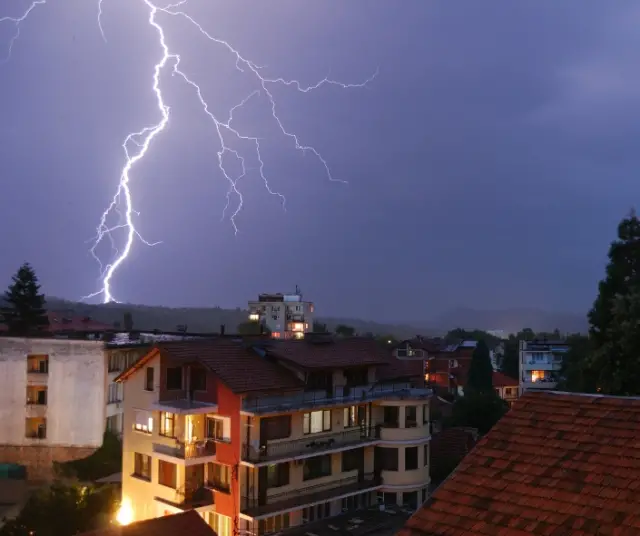Thunderstorms are impressive natural phenomena, but they can also be dangerous and cause significant damage. Knowing how to act during a thunderstorm is crucial to ensuring your personal safety and that of those around you.
Before the Thunderstorm: Essential Preparations
Stay informed
Information is your best ally before a thunderstorm. Use a variety of sources, such as trusted weather apps, local news stations, and government alerts, to stay aware of any adverse forecasts. Pay close attention to thunderstorm warnings and updates to make informed decisions.
Prepare an Emergency Kit
A well-planned emergency kit can make a difference in critical situations. Be sure to include essential items like flashlights, spare batteries, a full first aid kit, non-perishable food, bottled water, thermal blankets, and personal hygiene items. Customize your kit to your family's specific needs, such as prescription medications and baby items.
Secure your home
The structural integrity of your home is essential to resist the onslaught of a thunderstorm. Before a storm is forecast, perform regular inspections of your home. Reinforce windows with blinds or protectors, secure doors and check the condition of the roof. Make sure gutters are clean to avoid possible flooding.
Develop an Evacuation Plan
In extreme situations, it may be necessary to evacuate your home. Develop a detailed evacuation plan that includes escape routes, assembly points, and the location of local emergency shelters. Practice this plan with all members of your family to ensure a quick and coordinated response should the need arise.
Know the Location of Public Shelters
Identify public shelters or evacuation centers near your home. These places are usually prepared to receive people affected by storms or other natural disasters. Keep in mind that in the midst of a thunderstorm, your family's safety may depend on your ability to reach these locations quickly and safely.
Establish an Emergency Communication System
During a thunderstorm, communications may be affected. Establish an emergency communication system with your family and friends. This could include alternate phone numbers, secure messaging apps, or two-way radios. Make sure all family members understand how to use this system and are aware of evacuation plans.
Keep Important Documents Safe
Keep important documents in a safe and accessible place. This includes IDs, insurance papers, property documents, medical records, and any other crucial documents. Consider digitizing these documents and storing copies on a secure device or in the cloud.
Know the Insurance Policy
Review your insurance policy to understand what type of coverage you have in case of damage caused by thunderstorms. Make sure you are aware of the claims procedures and keep a copy of the policy along with your important documents.
Pruning and Cleaning Trees
Trees can become a hazard during a thunderstorm. Perform regular pruning to remove dead or weak branches that may fall during the storm. Also, make sure there are no trees leaning towards your home that could pose a hazard.
Basic Supplies Stock
In addition to the emergency kit, make sure you have a sufficient stock of basic supplies such as non-perishable food, water, medications and hygiene products. This can be especially helpful if the storm prevents access to stores or services for an extended period.
Recharge Electronic Devices
Before the thunderstorm begins, be sure to fully charge all your electronic devices, including cell phones, rechargeable flashlights, and portable radios. This will provide you with an additional power source in case of power outages.
Know First Aid
Familiarize yourself with basic first aid techniques. Learning how to perform CPR, treat injuries, and know how to act in medical emergencies can be crucial during and after a thunderstorm.
During the Thunderstorm: Safety Measures in Real Time
Stay Indoors
During a thunderstorm, it is safest to stay inside your home. Avoid going outside, as being outdoors increases the risk of being struck by lightning.
Avoid water
Stay away from faucets, sinks and bathtubs, as water is a conductor of electricity. Do not shower or touch any plugged-in appliances during the storm.
Don't Use Corded Phones
Avoid using corded phones during a thunderstorm, as phone lines can conduct electricity. Use only cell phones or cordless phones.
Turn off appliances
Turn off and unplug appliances and electronic devices to reduce the risk of damage from power surges. This includes televisions, computers, and major appliances.
Stay away from Windows and Doors
Stay away from exterior windows and doors to avoid possible damage from strong winds or debris. Stay in the center of the house, away from vulnerable areas.
After the Thunderstorm: Assessment and Safety Actions
Assess the Damage
After the storm has passed, conduct an assessment of possible damage to your home. Check the roof, windows and exterior structures for obvious damage.
Beware of Floods
Thunderstorms are often accompanied by heavy rain. Use caution when leaving after the storm and avoid flood-prone areas. Do not try to cross flooded streets.
Check the State of the Electrical Installations
Before restoring power to your home, check the status of the electrical installations. If you notice damage, seek professional help before reconnecting devices.
Report Emergencies
If you encounter emergency situations, such as downed power lines or damaged structures, report them to local authorities. Don't try to handle dangerous situations yourself.
Keep calm
After a thunderstorm, it is normal to feel anxious or stressed. Stay calm and follow safety recommendations. Patience and caution are essential in the post-storm phase.
By staying informed, preparing an emergency kit, and following specific safety guidelines, you can significantly increase your chances of getting through a thunderstorm safely. Awareness and preparation are the keys to minimizing risks and ensuring the safety of yourself and your loved ones.
